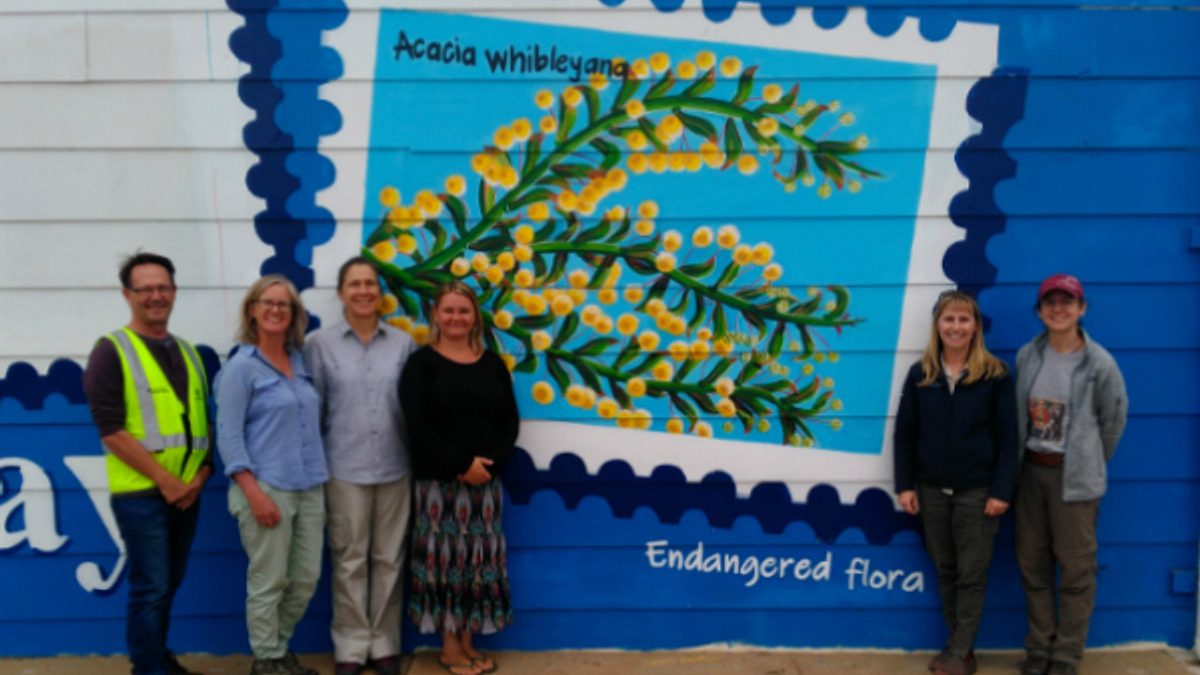Art and science fix for endangered Whibley’s wattle
A burst of yellow wattle blossom has now become a part of Tumby Bay's growing street art scene. The towns newest painting by talented local artist Danica Gates showcases the endangered Whibley’s wattle (Acacia whibleyana), a threatened flora species only found around Tumby Bay and nowhere else in the world.
A burst of yellow wattle blossom has now become a part of Tumby Bay's growing street art scene.
The towns newest painting by talented local artist Danica Gates showcases the endangered Whibley’s wattle (Acacia whibleyana), a threatened flora species only found around Tumby Bay and nowhere else in the world.
Natural Resources Officer Geraldine Turner said she’s in awe of how Danica has captured the botanical detail and beauty of this wattle in full flower.
“The wattle street art is just one of a growing group of paintings on the local chemist wall that Danica and her sister Emma are painting, which I think will go a long way in helping communicate what is unique and special about the nature of Tumby Bay, as well as increase community awareness and protection of the species,” said Geraldine.
“Tumby Bay is now in spotlight for its scientific research on this species.
“Last week we hosted research scientists from the University of Adelaide who visited five isolated populations, consisting of over 1,000 remnant plants.
“We will be working closely with University staff to develop a complete understanding of the species genetics, update a management plan and establish a comprehensive seed bank to conserve the wattle into the future.
“We are working with land managers to revegetate new areas with Whibley’s wattle and undertake pest plant and animal control in areas that have historic stands of Whibley’s wattle.
"Through more intensive surveying efforts we’ve hoping to discovery other natural populations of Whibley’s wattle that may be out there, which can provide more genetic diversity.”
All of the recovery actions are funded by the Australian Government's National Landcare Program, and are targeted around increasing understanding of the species genetics, and working with land managers to discover new populations and potential habitat.
Collectively these actions will go a long way toward conserving this species into the future.”
Whibley’s wattle was named in honour of Mr D.J.E Whibley, member of the State Herbarium of South Australia, and author of the first edition of the 'Acacias of South Australia' field guide.
Follow @LoveEyrePeninsula on Facebook for information on how you can be involved and help recovery Whibley’s wattle on Eyre Peninsula.
For more information please visit www.landscape.sa.gov.au/ep/projects-and-partners/landcare-endemic-veg-proj



